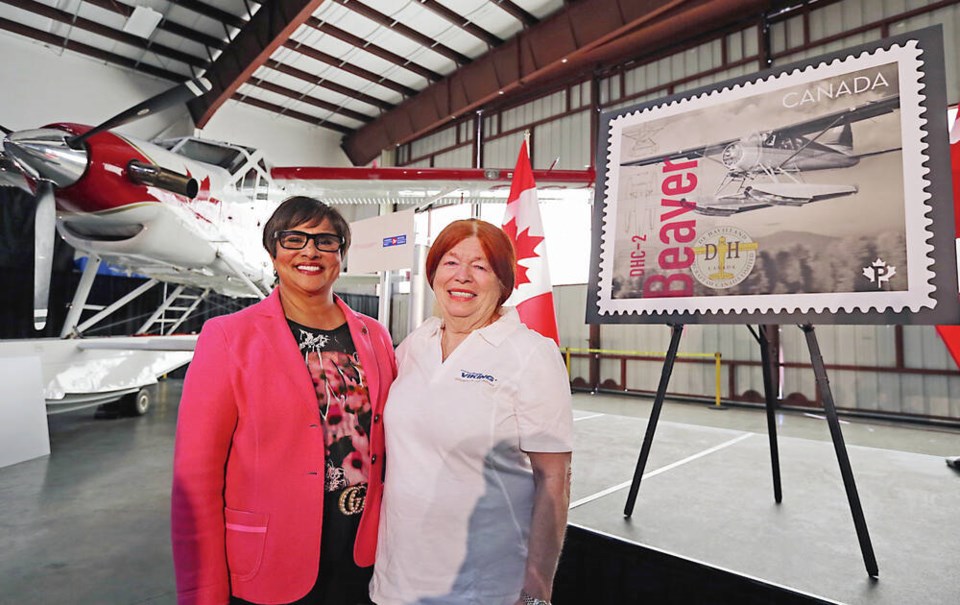Peter Killin’s 44 years flying and repairing Beaver aircraft have given him all sorts of stories to tell, including the time he delivered what he thought was a bag of mail to a remote community and it turned out to be a bag of laundry.
He rolled his eyes, flew back to where he started, picked up the mail and saw that it got to where it had to go.
The 69-year-old Campbell River resident was at Victoria International Airport on Thursday for the unveiling of a Canada Post stamp commemorating the Beaver — renowned as a bush plane and named one of Canada’s top engineering achievements of the 20th century by the Canadian Engineering Centennial Board.
“I’m just one of the guys that really appreciates what the Beaver has accomplished and is accomplishing, and will continue for many years to come,” Killin told the crowd gathered at the Viking Air hangar.
Killin recalled a time when a man in Alaska was mailing bales of hay to market, because it was cheaper than chartering a plane. Cue the Beaver, which was fitted with a specially designed door that could allow enough product to be loaded to make air delivery economical.
This year marks the plane’s 75th anniversary — the first De Havilland Canada DHC-2 Beaver took off from Toronto’s Downsview Airport in 1947. Of the 1,692 DHC-2 planes built during their 20-year production period, 750 are still registered to fly.
The stamp was unveiled locally because Viking Air, part of De Havilland Canada since 2019, has been a major producer of still-in-demand Beaver parts since 1983.
Local workers “make the parts that keep these wonderful machines flying,” said De Havilland Canada owner Sherry Brydson.
Brydson noted that bush pilots of the day were consulted when plans to create the Beaver were hatched.
Suromitra Sanatini, chairwoman of the Canada Post board of directors, said the Beaver stamp is part of the Canadians in Flight series established in 2019 to recognize Canada’s rich aviation history.
“Canada’s been a world leader in this field and so only a series of stamps could do it justice.”
By putting an image on a stamp, “Canada Post is conferring a kind of national honour,” she said.
“It’s important that our decisions reflect the country and Canadians.”
Sanatini called the Beaver “Canada’s workhorse in the air” that has connected remote regions around the country. It has also flown all over the world “from Africa to the Andes, and from the Arctic to the Antarctic,” she said.
>>> To comment on this article, write a letter to the editor: [email protected]



